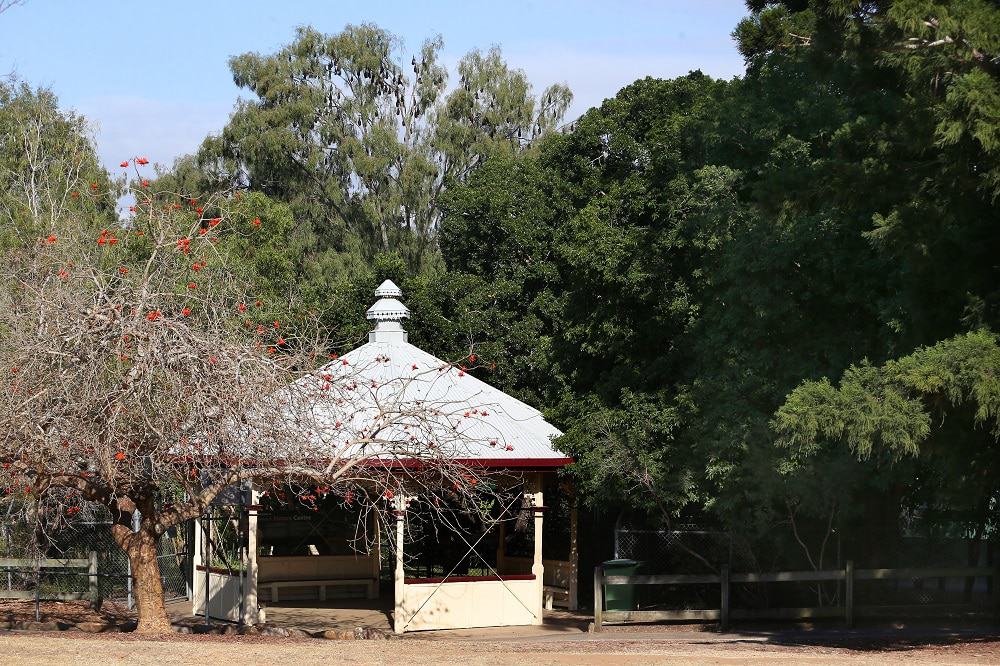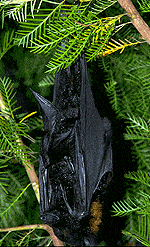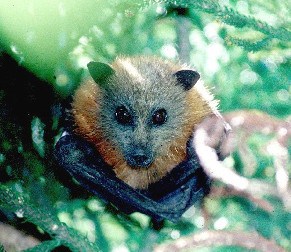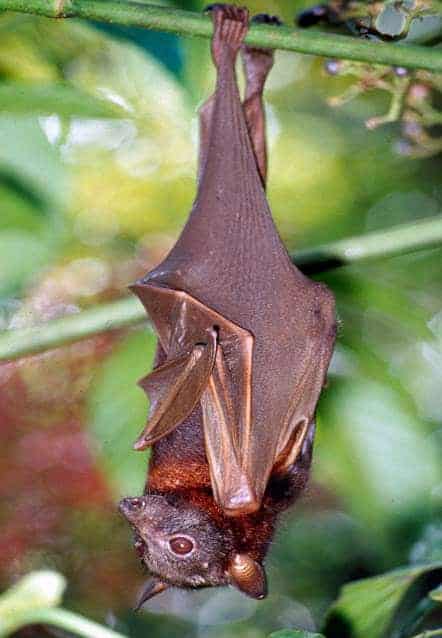
The Ipswich City Council is currently monitoring the flying fox colony that has congregated within the Ipswich Nature Centre at Queens Park.
Ipswich City Council is working with an ecologist to find out how to best deal with a flying fox colony which has developed at Ipswich Nature Centre in Queens Park.
But first, the ecologist needs to assess how many there are, which species they are, and their condition and breeding status.
What we do know is that the roost includes about 850 black and grey-headed flying foxes and a high number of pregnant females.
The grey-headed variety are a federally protected species.
Conservation and Environment Committee Chairwoman Councillor Kerry Silver said any management action would require adequate planning.
“We are looking at a technique used by the Sunshine Coast for canopy sprinklers,” Cr Silver said.
“The canopy sprinklers have shown a level of success in creating a buffer between houses and the flying foxes.
“We might usually try tree trimming but due to the current dry conditions and stress to the trees, we are looking for alternatives.
“Based on research and previous management actions used at various roosts across the country, council acknowledges the complexities and unpredictable nature of flying foxes along with often unsuccessful and expensive outcomes of dispersal.”
In 2013 the Queensland Government provided local government with an ‘as-of-right’ framework to manage flying fox roosts within designated urban areas in accordance with the Nature Conservation Strategy.
In other words, they put guidelines in place to help minimise the damage caused by flying foxes, without hurting the animals.
Council is guided by the Department of Environment and Heritage Code of Practice, which governs when and how flying foxes can be moved – or, as some techniques would have it, are encouraged to move.
“During the summer months we will see an influx of the little red flying fox, which usually comes in large numbers and often causes noise and smell disturbance in urban roost sites,” Cr Silver said.
“The little reds stick around for a few months before heading north again around April each year.
“Council’s primary objective through the implementation of this plan is to protect the wellbeing, health and livelihoods of the residents of Ipswich.
“At the same time council will strive to conserve the cities flying fox populations and the essential ecological roles they perform.”
For more check out council’s Ipswich Flying Fox Roost Management Plan.
Flying Fox Fact File

The black flying fox (Pteropus alecto) have jet black fur with chocolate brown patch of fur often seen on the back of its neck and shoulders. They have a wingspan of about 1 metre. The average weight is 500-1000g and have a length of 230-280mm. Black flying foxes can live up to 20 years in the wild. The babies are carried by the female until about 4 weeks of age, then left at the roost while the mother forages at night. The babies depend on their mothers for at least 3 months, but begin to fly at 8 weeks of age.
Fascinating Black Flying Fox fact – Unusually, a colony of about 600 black flying-foxes was found roosting on the vertical walls of a deep limestone shaft in Chillagoe caves, near Mareeba. Some bats were roosting as far as 10m down from the top.
The grey-headed flying fox (Pteropus poliocephalus) is the largest Australian bat with a wingspan of up to one metre. Federally listed as Vulnerable under the Environment Protection and Biodiversity Conservation Act 1999. They have a sophisticated vocal communication, making more than 30 specific calls. They are endemic to Australia. Grey-headed flying foxes are the only species with a collar of orange/brown fur that fully encircles the head. They weigh 600-1000g, have a length of 230-290mm.
After first three weeks, young are left at the camp while females forage at dusk. The females find their young by scent when they return to camp.
Fascinating grey-headed flying fox facts -Some Greys stay permanently in one camp; others will travel widely between camps to feed on irregularly flowering eucalypts. Two young adult males tracked over 10 months made round trips of at least 2000 km, transiting 6–15 camps.


Little red flying foxes (Pteropus scapulatus) are the most widespread species of fruit bat in Australia. They are the only species that regularly roosts in clusters, up to 30 have been seen hanging together in a tight bunch. Little red flying foxes are nomadic and their movements depend on food resources. They vary in colour from reddish brown to light brown. Their wings are brown and semi-transparent. Average weight is 300-600g, length 125-200mm. Often crash landing in trees, they need to climb a tree limb to take off again. Efficient climbers that use their jointed thumbs as well as feet to climb about. Fascinating little red flying fox fact – Little reds are the only flying fox in the world that eats almost exclusively nectar. Their tongues have even evolved differently from other flying foxes to be more similar to the tongues of nectar-feeding birds, such as honey-eaters. Little red flying foxes have some interesting differences from Australia’s other flying fox species. They breed at different times of year, and roost closer together than other flying foxes.
Fact File information and images courtesy of the Department of Environment and Heritage Protection and the Wildlife Preservation Society of Queensland.


4.5
5